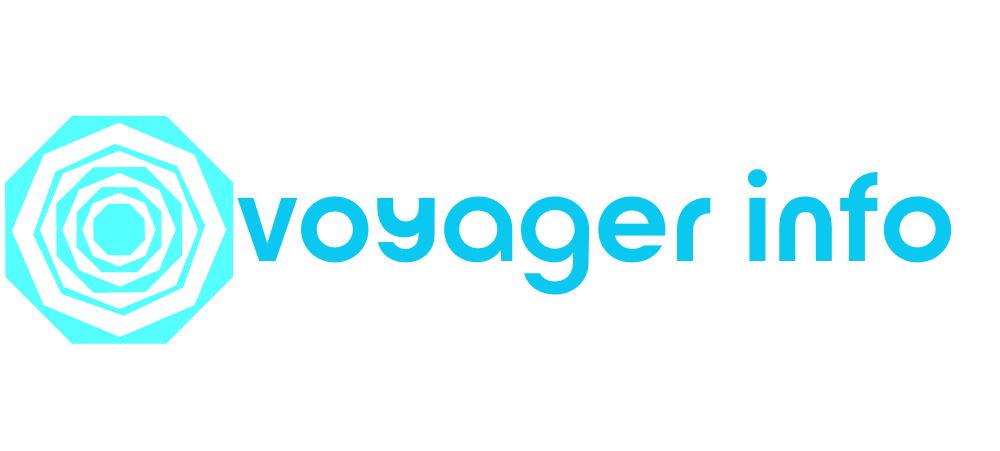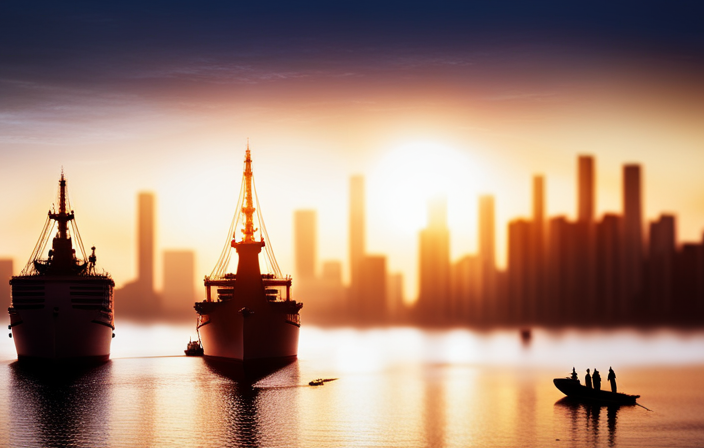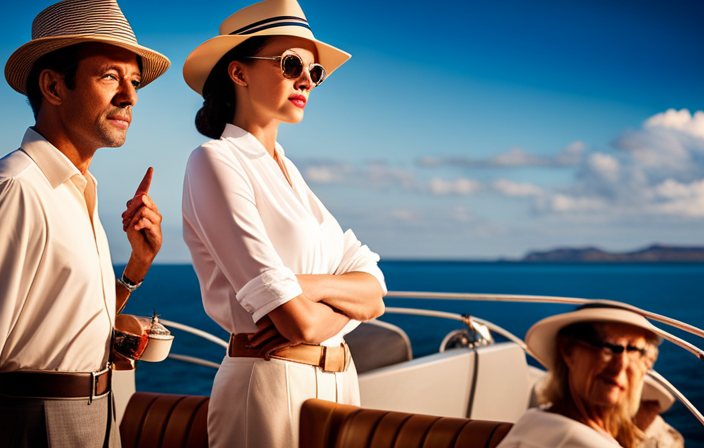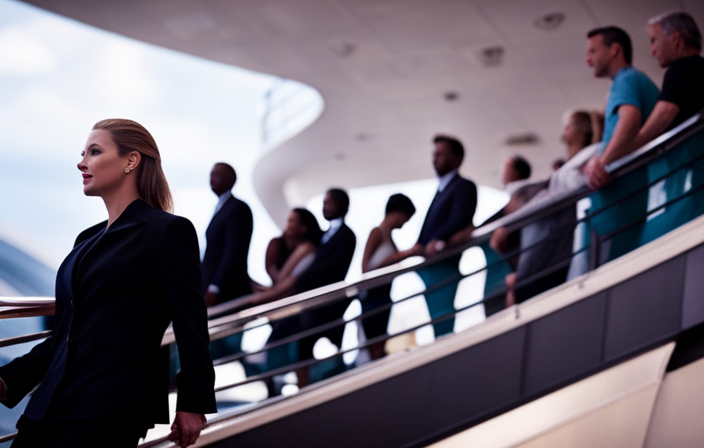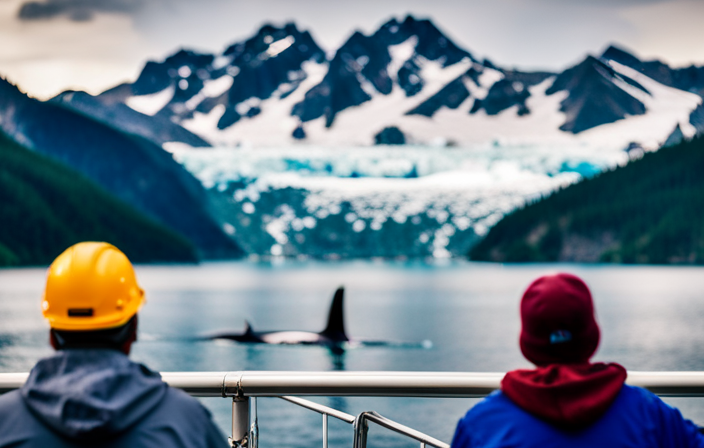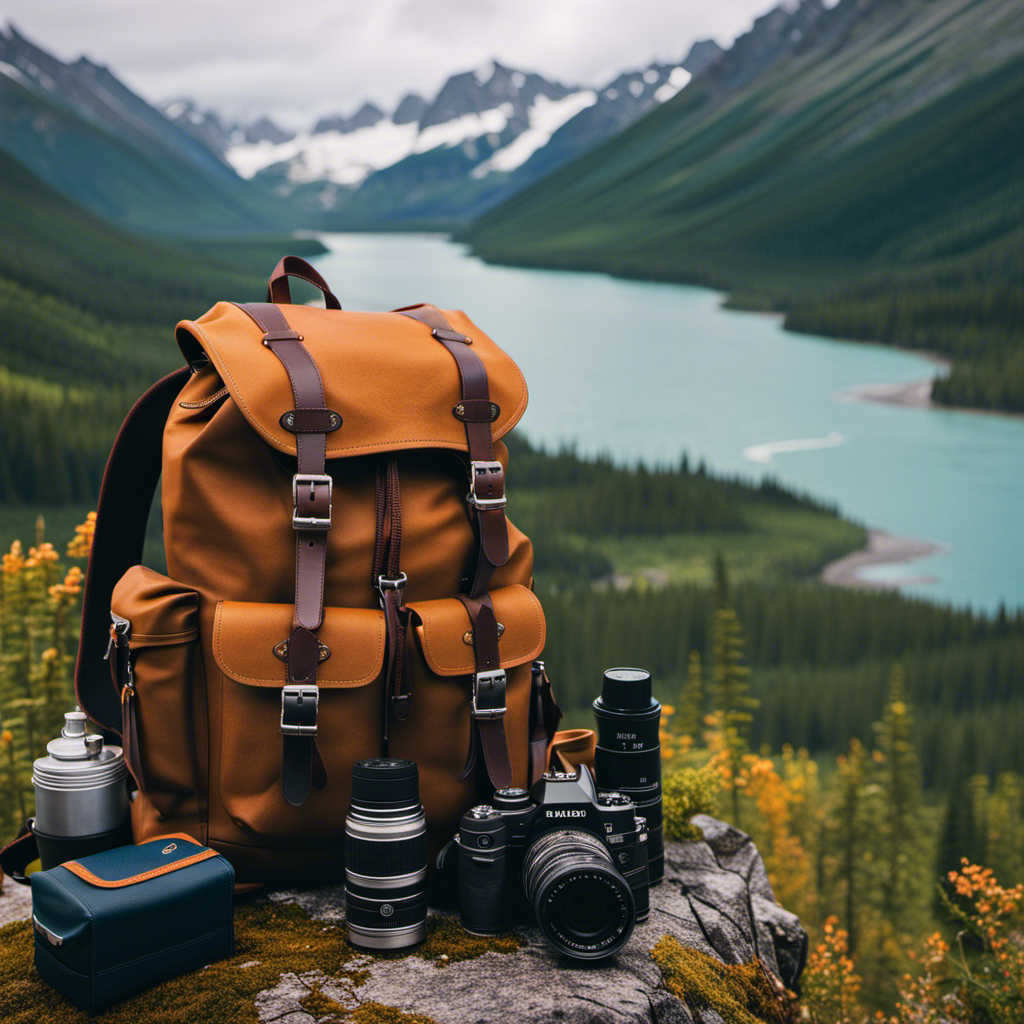Ever curious about the origins of the splendid cruise ships that transport us to faraway, exotic places? Search no more! In this article, I’ll guide you through an intriguing exploration of the shipbuilding industry, revealing what goes on behind the curtain.
From the intricate shipbuilding process to the major locations where these floating marvels come to life, we will explore it all.
We’ll delve into the evolution of cruise ship design and discover how technology plays a pivotal role in constructing these impressive vessels.
I’ll also discuss the incredible journey from shipyard to open sea and the significant employment and economic impact that comes with building these massive structures.
Additionally, we can’t ignore sustainability and green shipbuilding practices that are shaping the future of cruise ship construction.
So join me as we uncover where exactly these awe-inspiring ships are born and what lies ahead in their future development.
Key Takeaways
- South Korea has the highest global market share for shipbuilding, with advanced techniques and facilities.
- Meyer Werft in Germany and Fincantieri in Italy are prominent shipbuilding yards that have revolutionized cruise ship design and construction.
- Technology plays a crucial role in the evolution of cruise ship design, including energy-efficient propulsion systems and automation in shipbuilding.
- Building cruise ships involves overcoming challenges such as budget constraints, logistical complexities, and stringent safety regulations, requiring innovative solutions and advanced project management techniques.
The Shipbuilding Process
Now let’s take a look at how cruise ships are actually put together, from start to finish!
Shipbuilding techniques have evolved over time, but the process remains intricate and fascinating. Historically, cruise ship construction involved skilled artisans who meticulously crafted each component by hand. Today, advanced technologies such as computer-aided design (CAD) and modular construction have revolutionized the industry.
The shipbuilding process begins with the creation of a detailed blueprint that outlines every aspect of the vessel. Then, large sections of the ship are constructed separately and later assembled together like a puzzle. This modular approach allows for greater efficiency and faster production times.
Now that we’ve explored the shipbuilding process, let’s delve into major shipbuilding locations where these magnificent vessels come to life!
Major Shipbuilding Locations
Major shipbuilding locations have played a significant role in shaping the maritime industry. South Korea, for example, boasts the highest global market share for shipbuilding. This achievement can be attributed to the country’s advanced techniques and state-of-the-art facilities. South Korean shipyards are renowned for their technological advancements and efficient production processes, both of which have greatly contributed to their success in the industry.
Throughout history, there have been several prominent shipbuilding locations worldwide. Scotland, for instance, stands out as the birthplace of famous ships like the RMS Titanic. Similarly, Japan, Germany, and Italy have also been notable historical shipbuilding sites.
These major shipbuilders continue to shape the maritime industry with their innovative designs and construction methods. Their contributions are evident in the ongoing development and advancement of the industry.
Prominent Shipbuilding Yards
Explore the world of prominent shipbuilding yards and witness their groundbreaking designs and innovative construction methods. These shipyards have played a significant role in shaping the cruise industry.
One such example is Meyer Werft in Papenburg, Germany. With a rich history dating back to 1795, this yard has produced numerous iconic cruise ships using state-of-the-art technology.
Another noteworthy shipyard is Fincantieri in Italy, renowned for its historical shipbuilding yards that have been operating since the 18th century. Their craftsmanship and attention to detail are evident in each vessel they build.
These prominent shipbuilding yards have set the stage for the evolution of cruise ship design, pushing boundaries and constantly improving upon previous innovations.
Transitioning into the subsequent section about the evolution of cruise ship design, one cannot overlook the impact these shipyards have had on revolutionizing every aspect of the cruising experience.
Evolution of Cruise Ship Design
As the sun rises over the horizon, a new era dawns for the majestic floating palaces that have redefined luxury travel on the high seas. Cruise ship design has undergone evolutionary changes over the years, driven by a quest for innovative designs that enhance passenger experience and maximize efficiency.
From traditional ocean liners to modern mega-ships, cruise ships have continuously evolved to meet the demands of an ever-growing market.
-
Introduction of balcony cabins: The inclusion of private balconies in cabin designs revolutionized cruise ship accommodation, offering passengers stunning views and a more intimate connection with the sea.
-
Onboard entertainment revolution: Cruise lines have introduced state-of-the-art theaters, water parks, rock climbing walls, and even virtual reality experiences to cater to passengers’ desire for excitement and entertainment.
-
Energy-efficient propulsion systems: The adoption of advanced propulsion technologies such as LNG engines and electric propulsion systems has significantly reduced fuel consumption and environmental impact.
As we delve into the role of technology in shipbuilding, it becomes evident that these evolutionary changes were made possible through technological advancements.
The Role of Technology in Shipbuilding
Imagine yourself standing on the bustling dock, mesmerized by the symphony of tools and machinery, as cutting-edge technology breathes life into these floating marvels. The role of technology in shipbuilding has revolutionized the cruise ship industry, particularly in the evolution of ship propulsion and the impact of automation.
To illustrate this, let’s take a look at a table that showcases some key advancements:
| Ship Propulsion | Automation in Shipbuilding |
|---|---|
| Diesel Engines | CAD/CAM Systems |
| Gas Turbines | Robotics |
| Electric Motors | 3D Printing |
| LNG Powerplants | Virtual Reality |
These technological innovations have led to more efficient and environmentally friendly cruise ships. Evolution in ship propulsion has allowed for greater speed and maneuverability, while automation has improved precision and reduced construction time.
As we transition into discussing challenges in cruise ship construction, it is important to acknowledge how technology continues to shape this dynamic industry.
Challenges in Cruise Ship Construction
Navigating the stormy waters of cruise ship construction is like captaining a ship through treacherous seas, with challenges such as budget constraints, logistical complexities, and stringent safety regulations.
One of the major challenges faced in cruise ship construction is managing the budget. Building a cruise ship requires significant financial investment, and staying within the allocated budget can be demanding.
Additionally, logistical complexities arise due to the sheer size and complexity of these vessels. Coordinating various suppliers, contractors, and teams involved in different stages of construction requires meticulous planning and execution.
Furthermore, stringent safety regulations add an extra layer of difficulty. Ensuring compliance with international maritime standards demands attention to detail and adherence to strict guidelines throughout the construction process.
To overcome these challenges, innovative solutions are continuously being developed in the industry. Advanced project management techniques help streamline operations and optimize efficiency. Cutting-edge technologies such as 3D modeling and simulation enable better design visualization and improved coordination among different departments. Collaboration between shipyards and naval architects allows for efficient material selection and structural design that meets safety requirements while minimizing costs.
Transitioning from shipyard to open sea involves overcoming these obstacles with skillful navigation through turbulent waters; it is a journey that requires careful planning, innovation, and perseverance.
The Journey from Shipyard to Open Sea
Embarking on the voyage from shipyard to open sea is a thrilling adventure filled with anticipation and excitement. As the massive cruise ship begins its journey, it leaves behind a trail of economic benefits for the local community.
The first sub-list:
-
Job Creation: The construction of a cruise ship requires a large workforce, including engineers, welders, carpenters, and electricians. This creates employment opportunities for individuals in the shipbuilding industry.
-
Economic Impact: The presence of a shipyard not only generates direct jobs but also stimulates secondary industries such as suppliers and service providers. This boosts the local economy by attracting investments and increasing consumer spending.
The second sub-list:
-
Skill Development: Building a cruise ship demands highly skilled labor, which contributes to skill development within the community.
-
Community Pride: Witnessing the birth of an enormous vessel cultivates a sense of pride among locals about their contribution to this remarkable achievement.
The third sub-list:
-
Tourism Boost: Once completed, these magnificent ships become tourist attractions themselves. They draw visitors who spend money on accommodations, dining options, and local activities.
-
Destination Growth: Cruise ships provide access to new destinations previously unreachable by land or air travel. This opens up opportunities for tourism growth and increases revenue streams for those locations.
Transition Sentence: Beyond job creation and impact on the local economy lies another significant aspect – employment and economic impact throughout its operational life cycle.
Employment and Economic Impact
When discussing the employment and economic impact of cruise ship building, it is important to consider the job opportunities that arise in the shipbuilding industry. The construction and assembly of cruise ships require a skilled workforce, including engineers, welders, and technicians.
Additionally, the local and global economic benefits are significant as shipyards provide income for communities through wages and taxes.
Lastly, tourism and local infrastructure development go hand in hand with cruise ship building as new ports are constructed to accommodate these massive vessels, creating opportunities for tourism-related businesses such as hotels, restaurants, and transportation services.
Job Opportunities in Shipbuilding
Shipbuilding offers a plethora of job opportunities for individuals seeking employment in the maritime industry. The shipbuilding sector provides a wide range of positions that cater to various skill sets and interests. Some of the job opportunities include:
- Welders: Skilled professionals who join metal parts using heat and pressure.
- Naval Architects: Experts who design ships, ensuring their stability, safety, and performance.
- Electricians: Responsible for installing and maintaining electrical systems on board.
- Painters: Specialized in applying protective coatings to the ship’s exterior surfaces.
These employment opportunities not only contribute to personal growth but also have a significant impact on economic growth. Shipbuilding creates jobs locally and globally, stimulating economic activity through investments in infrastructure, research and development, as well as supply chains.
These benefits extend beyond the shipyards themselves, positively impacting related industries such as suppliers of materials and equipment. As we delve deeper into the discussion about local and global economic benefits, it becomes evident how crucial shipbuilding is for fostering prosperity in communities worldwide.
Local and Global Economic Benefits
One can see the significant impact shipbuilding has on both local and global economies through job creation and investment in various industries. The employment opportunities provided by shipbuilding are vast, ranging from skilled labor positions such as welders and electricians to engineering and management roles. This not only boosts the economy by reducing unemployment rates but also stimulates economic growth as individuals with stable incomes contribute to consumer spending. Moreover, shipbuilding projects require a wide range of materials and services, leading to increased business for suppliers and contractors in related industries such as steel manufacturing, machinery production, and logistics. To illustrate the economic benefits visually:
| Economic Benefits | Local Economy | Global Economy |
|---|---|---|
| Employment | High | Significant |
| Investment | Substantial | Considerable |
| Growth | Steady | Rapid |
This positive impact on employment opportunities and economic growth lays the foundation for further development in tourism and local infrastructure.
Tourism and Local Infrastructure Development
The development of tourism and local infrastructure is greatly enhanced by shipbuilding, leading to an increase in job opportunities and economic growth.
The impact of tourism on local communities cannot be underestimated. Cruise ships bring a large number of tourists to different destinations, resulting in increased revenue for local businesses such as hotels, restaurants, and souvenir shops.
This influx of visitors also necessitates the improvement and expansion of local infrastructure, including roads, ports, and airports. As a result, the community benefits from better transportation systems and facilities that cater to the needs of both tourists and locals alike.
Moreover, the construction of cruise ships requires a skilled workforce, creating employment opportunities for individuals within the community. This not only boosts the local economy but also contributes to overall social development.
Transitioning into the subsequent section about sustainability and green shipbuilding highlights the importance of considering environmental factors in ship construction processes.
Sustainability and Green Shipbuilding
In discussing sustainability and green shipbuilding, it is important to address three key points.
First, the adoption of renewable energy sources plays a vital role in reducing the environmental impact of cruise ships.
Second, effective waste management strategies are crucial for minimizing pollution and preserving marine ecosystems.
Lastly, industry initiatives for sustainable practices aim to promote responsible and eco-friendly operations within the cruise ship industry.
Adoption of Renewable Energy Sources
Shipyards worldwide are embracing renewable energy sources to power the construction of magnificent cruise ships, creating a sustainable and eco-friendly future for the industry. The adoption of solar power is a key component in this transition. With advancements in solar panel technology, shipbuilders are incorporating photovoltaic systems into their designs, harnessing the sun’s energy to generate electricity onboard during construction. This not only reduces reliance on traditional power sources but also decreases greenhouse gas emissions associated with shipbuilding activities.
Additionally, wind power integration has gained momentum in shipyards around the world. By utilizing wind turbines and sails, shipbuilders can capitalize on natural wind resources to generate clean energy during construction. This innovative approach not only reduces carbon footprint but also contributes to cost savings by offsetting conventional fuel consumption.
As we move forward into the next section on waste management and environmental protection, it is crucial to consider these renewable energy initiatives as vital steps towards a more sustainable cruise industry.
Waste Management and Environmental Protection
Embrace the challenge of preserving our oceans by implementing effective waste management practices, like a diligent captain navigating through treacherous waters.
In order to comply with environmental regulations and protect marine ecosystems, cruise ships are adopting advanced waste management systems. These systems include onboard wastewater treatment plants that remove pollutants before discharging into the sea, reducing harm to marine life.
Additionally, ships now implement comprehensive recycling programs to minimize waste generation and maximize resource utilization. This includes sorting and processing different types of waste such as plastic, glass, paper, and aluminum, ensuring they are properly recycled or disposed of onshore.
Furthermore, cruise lines are investing in state-of-the-art incinerators that safely burn solid waste at high temperatures without releasing harmful emissions.
By prioritizing waste management practices and complying with strict environmental regulations, the cruise industry is taking significant steps towards minimizing its ecological impact.
Transitioning into the subsequent section about ‘industry initiatives for sustainable practices’, it is important to highlight ongoing efforts in pursuing environmentally-friendly technologies and sustainable operations.
Industry Initiatives for Sustainable Practices
Take a look at the industry initiatives that are driving sustainable practices and discover how you can contribute to a greener future on the high seas. The cruise ship industry is actively collaborating with various stakeholders to implement environmentally friendly measures. Key players have come together to develop innovative solutions that reduce the environmental impact of cruise ships. These initiatives include advanced waste management systems, energy-efficient technologies, and alternative fuel sources. Environmental regulations also play a crucial role in shaping these practices, pushing companies to adopt more sustainable approaches. By complying with stricter regulations, cruise ship builders and operators are working towards minimizing their carbon footprint and preserving marine ecosystems. Looking ahead, future trends in cruise ship construction will likely focus on further enhancing sustainability through advancements in materials, design, and propulsion systems.
| Initiative | Description |
|---|---|
| Advanced Waste Management Systems | Implementation of cutting-edge technologies for efficient waste disposal onboard. |
| Energy-Efficient Technologies | Integration of energy-saving features such as LED lighting and smart HVAC systems. |
| Alternative Fuel Sources | Exploration of cleaner fuels like liquefied natural gas (LNG) or hydrogen to power ships. |
As we delve into future trends in cruise ship construction, it becomes evident that sustainability will remain a key driver for innovation in the industry.
Next section: ‘Future Trends in Cruise Ship Construction’
Future Trends in Cruise Ship Construction
One interesting statistic to note is that the number of cruise ships being built annually is projected to increase by 60% over the next decade. This surge in construction can be attributed to future innovations in cruise ship design and technology.
Shipbuilders are constantly exploring new ways to enhance passenger experience, improve sustainability, and reduce environmental impact. For example, there is a growing trend towards using cleaner fuels and implementing advanced waste management systems on board. These initiatives not only benefit the environment but also have a positive impact on tourism.
Travelers are increasingly seeking out eco-friendly options, and cruise lines that invest in sustainable practices will likely attract more customers. As the demand for cruising continues to grow, it is essential for shipbuilders to stay ahead of the curve by incorporating these future trends into their construction processes.
Frequently Asked Questions
How long does it typically take to build a cruise ship from start to finish?
It typically takes around 2-3 years to build a cruise ship from start to finish. The construction timeline can vary depending on the size and complexity of the vessel, as well as any challenges encountered during the building process.
What materials are commonly used in the construction of cruise ships?
In cruise ship construction, sustainable practices and innovative materials are utilized. These methods ensure the longevity of the vessel while minimizing environmental impact. Advanced alloys, composite materials, and energy-efficient systems are commonly employed in this meticulous process.
Are there any specific regulations or standards that cruise ships must meet during the building process?
Yes, there are specific regulations and standards that cruise ships must meet during the building process. These include safety measures, environmental considerations, and requirements for structural integrity and stability.
How do cruise ships undergo quality control and testing before they are deemed seaworthy?
Before cruise ships are deemed seaworthy, they undergo rigorous quality control and testing. From stress tests to fire safety inspections, every aspect of the ship is scrutinized to ensure it meets the highest standards of safety and performance.
Are there any significant differences in the shipbuilding process between small and large cruise ships?
When it comes to the shipbuilding process, there are indeed significant differences in design and challenges in construction between small and large cruise ships. These variations stem from factors such as size, capacity, and specific requirements of each vessel.
Conclusion
In conclusion, the shipbuilding industry plays a pivotal role in constructing magnificent cruise ships that take us on unforgettable journeys. The process involves meticulous planning, innovative design, and advanced technology.
Shipyards around the world serve as the birthplace of these floating marvels, employing thousands of skilled workers and contributing significantly to local economies.
As we sail into the future, sustainability becomes a pressing concern, leading to greener and more eco-friendly shipbuilding practices.
Like a symphony of engineering prowess, these ships continue to amaze and inspire us all.
